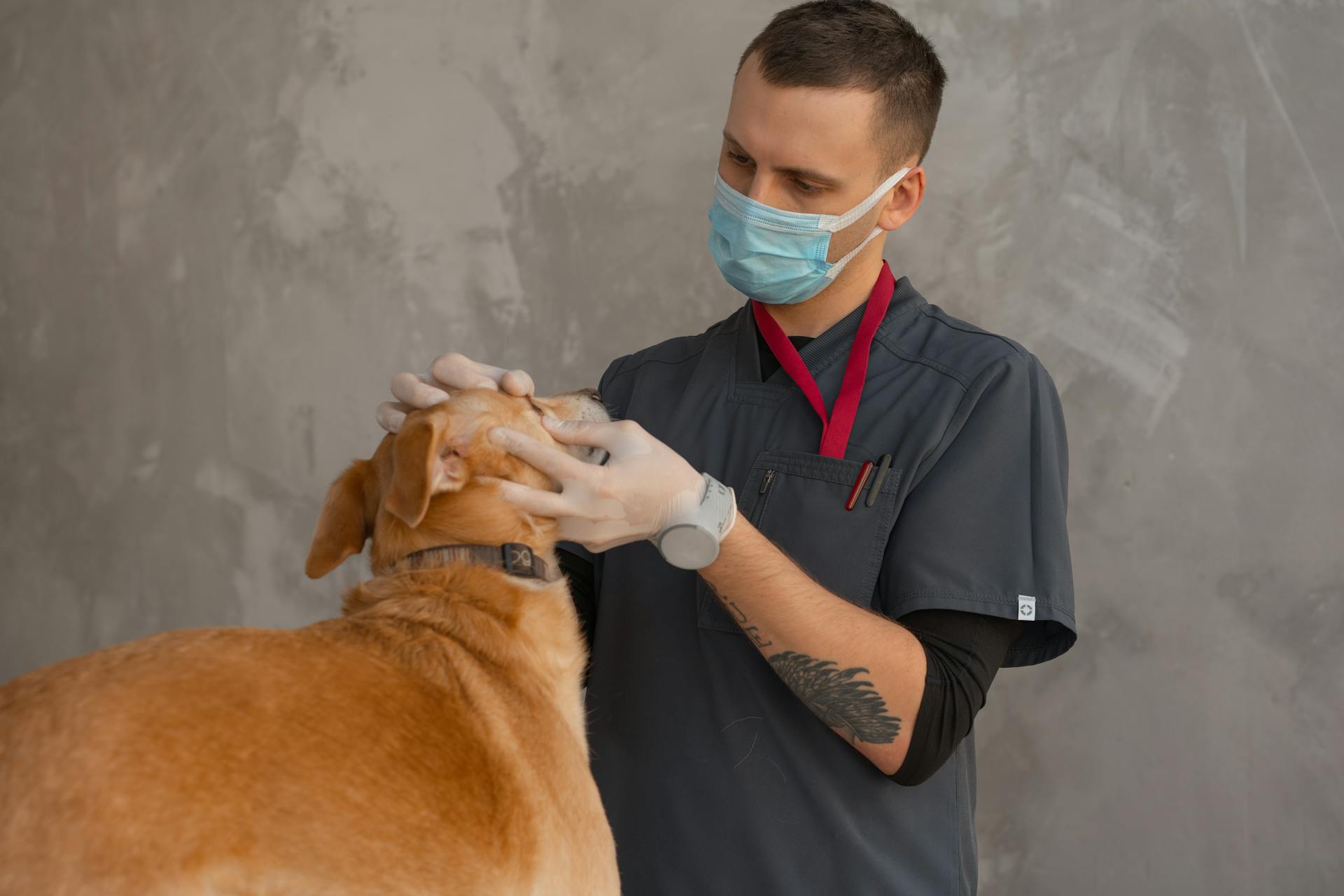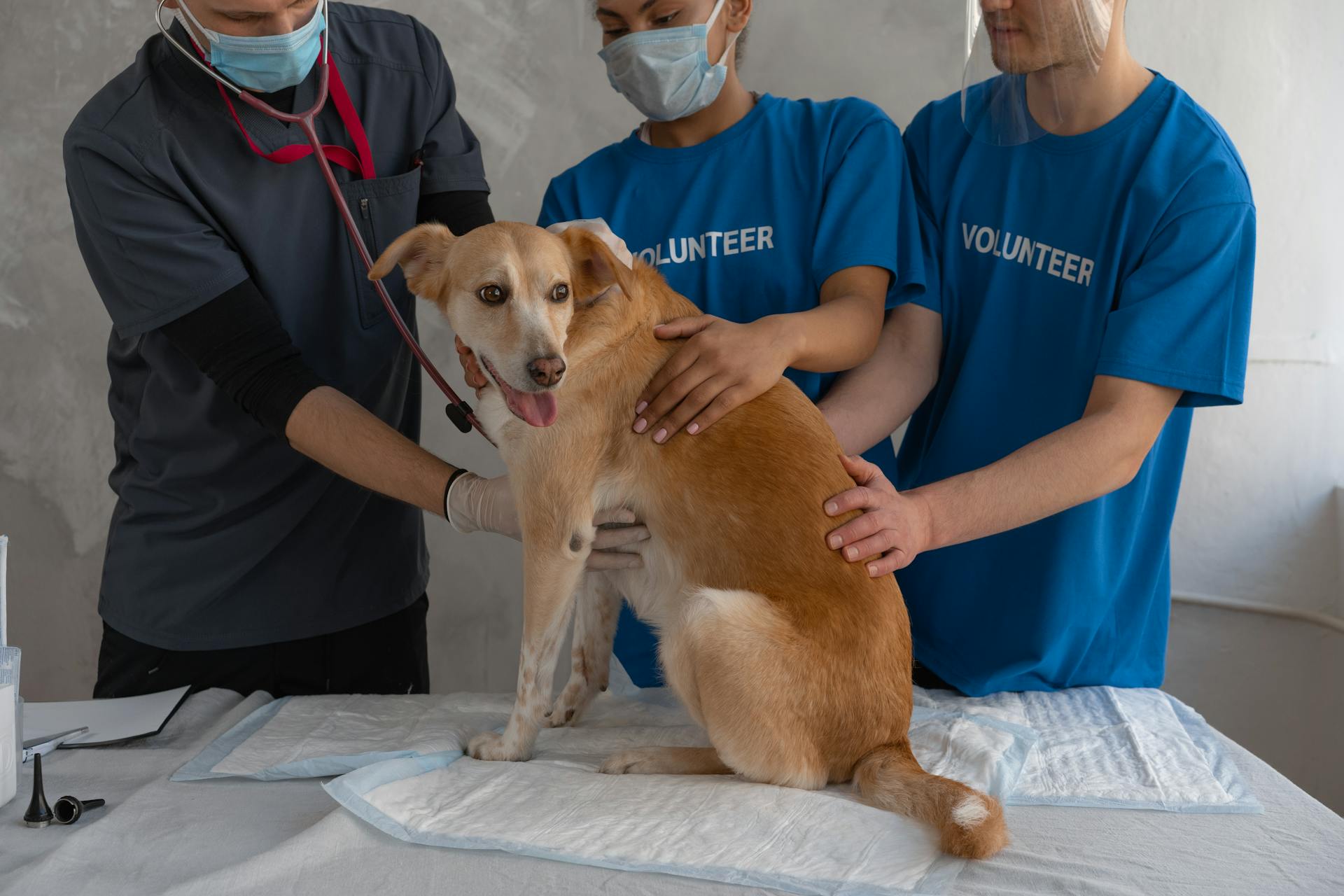
Canine rectal cancer is a serious and often misunderstood condition.
Rectal cancer in dogs is most commonly caused by a type of tumor called adenocarcinoma, which originates in the glandular cells of the rectum.
Some breeds are more prone to rectal cancer than others, including German Shepherds, Boxers, and Dachshunds.
Symptoms of rectal cancer in dogs can include bloody stools, diarrhea, and abdominal pain.
Causes and Types
Perianal adenomas, a type of benign tumor, develop due to hormonal imbalances in dogs, specifically the presence of testosterone. This is why intact male dogs are more prone to developing perianal adenomas.
Neutering does not guarantee complete prevention of perianal adenomas, as hormonal imbalances can still occur in neutered or female dogs.
Causes of Perianal Adenoma in Dogs
Perianal adenoma in dogs is often caused by hormonal imbalances.
The presence of testosterone plays a significant role in the development of perianal gland cells, which can lead to the formation of benign tumors.
Intact male dogs are more prone to developing perianal adenomas due to the influence of testosterone.
Neutering can reduce the risk, but it's not a guarantee against hormonal imbalances.
Hormonal imbalances can still occur in neutered or female dogs.
Aetiology, Treatment and Prognosis of Intestinal Tumours

The prognosis of intestinal tumors is influenced by several factors, including the type of tumor, its grade, and whether it has spread to other parts of the body.
The prognosis varies greatly depending on the specific type of tumor. For example, canine SI Adenocarcinoma has a relatively short survival time of 4-10 months, while canine GIST can last for around 3 years.
In some cases, treatment can improve the prognosis. For instance, canine MCT with metastases has a poor prognosis, with a survival time of less than 6 months, but chemotherapy can extend survival to around 9 months.
Here's a rough guide to the prognosis of different types of intestinal tumors in dogs and cats:
Keep in mind that these are general estimates and can vary depending on individual circumstances.
Symptoms and Complications
Symptoms of perianal adenoma in dogs can be relatively straightforward to identify, with common symptoms including one or more raised, rounded, and firm masses around the anus.
These masses can range in size from small nodules to larger tumors, and may be pigmented or ulcerated. In some cases, perianal adenomas can cause discomfort or pain, leading to excessive licking, scooting, or difficulty with defecation.
Perianal adenomas can lead to complications, such as becoming ulcerated or infected, causing discomfort and potential secondary infections.
Perianal Adenoma Symptoms
Perianal adenoma in dogs can manifest as one or more raised, rounded, and firm masses around the anus.
These masses can range in size from small nodules to larger tumors, and may be pigmented or ulcerated.
An ulcerated cancer wound occurs when a cancer that is growing under the skin breaks through the skin and creates a wound.
In some cases, perianal adenomas can cause discomfort or pain, leading to excessive licking, scooting, or difficulty with defecation.
Symptoms can vary in severity, but it's essential to monitor your dog for any unusual behavior or changes in their anal area.
Perianal Adenoma Complications

Perianal adenomas can be a serious issue for dogs, and it's essential to be aware of the potential complications.
These tumors can become ulcerated, leading to discomfort for your dog.
In some cases, perianal adenomas can progress to a malignant form of the tumor, known as perianal adenocarcinoma.
Prompt veterinary attention is crucial if you notice suspicious growths around your dog's anus.
Diagnosis and Investigation
In canine rectal cancer, a minimum database of haematology, biochemistry, and urinalysis is crucial for diagnosis and investigation.
Physical examination can reveal a palpable abdominal mass in up to 50 percent of cases, and a rectal examination is essential to identify rectal masses or strictures/annular lesions.
Haematology frequently documents anaemia secondary to gastrointestinal bleeding or chronic inflammation, but melena may not always be present.
Neutrophilia is also common in canine rectal cancer patients.
Serum biochemistry demonstrates hypoproteinaemia secondary to malabsorption in up to one-third of cases, and cobalamin levels should be assessed in patients with small intestinal tumours in case supplementation is required.
Abdominal ultrasound is a sufficient diagnostic tool to identify a focal intestinal lesion and assess regional lymph nodes for enlargement.
Ultrasound can more accurately assess intestinal wall layering compared to computed tomography, which is significant as loss of wall layering is associated with neoplasia compared to inflammatory lesions.
If the mass is causing luminal obstruction or has perforated, surgical excision for both diagnostic and therapeutic purposes may be considered.
Treatment and Prognosis
Surgery is often the primary treatment for intestinal tumors in dogs, including canine rectal cancer. The goal of surgery is to remove the tumor and affected tissue, and in some cases, to relieve obstruction or prevent rupture.
The prognosis for canine rectal cancer depends on several factors, including the tumor type, grade, and presence of metastases. The prognosis can vary significantly, even for the same type of tumor.
Tumor type plays a significant role in determining the prognosis. For example, a study found that dogs with SI Adenocarcinoma have a prognosis of 4-10 months with surgery alone. In contrast, dogs with MCT (Mast Cell Tumors) have a very poor prognosis if they have metastases, with a survival time of less than 6 months.
Treatment options may include surgery, chemotherapy, or a combination of both. Chemotherapy can be effective in treating some types of intestinal tumors, including lymphoma and adenocarcinomas. However, the effectiveness of chemotherapy depends on the tumor grade and other factors.
For another approach, see: Canine Cancer Prognosis
Here is a summary of the prognosis for different types of intestinal tumors in dogs:
Keep in mind that these are general estimates and may vary depending on individual circumstances. Regular monitoring and follow-up visits with your veterinarian are essential to detect any recurrence or signs of malignancy.
Frequently Asked Questions
How long can a dog live with a rectal tumor?
A dog's median survival time with a rectal tumor varies depending on the type, ranging from 7 weeks to 12 months. Surgery can be a curative option for some types, but a guarded or poor prognosis is often associated with others.
What are the early stages of rectal cancer?
In the early stages, rectal cancer often shows no symptoms, but may cause changes in bowel movements. If symptoms do appear, they can be subtle, such as rectal bleeding and fatigue.
How do you know if your dog has a bowel tumor?
Common signs of a bowel tumor in dogs include weight loss, vomiting, diarrhea or constipation, and blood in the vomit or feces. If you notice any of these symptoms, consult a veterinarian for a proper diagnosis and treatment
Sources
- https://hospital.cvm.ncsu.edu/services/small-animals/cancer-oncology/oncology/canine-and-feline-intestinal-tumors/
- https://www.veterinary-practice.com/article/diagnosis-and-treatment-of-canine-intestinal-tumours
- https://collegehillsvet.com/perianal-adenoma-in-dogs-causes-symptoms-and-treatment/
- https://www.dogcancerblog.com/articles/full-spectrum-cancer-care/conventional/surgery/senior-dog-rectal-cancer-surgery/
- https://www.dogcancer.com/podcast/causes-and-prevention/managing-rectal-tumors-in-dogs-rewind-with-dr-demian-dressler-and-dr-sue-ettinger/
Featured Images: pexels.com


